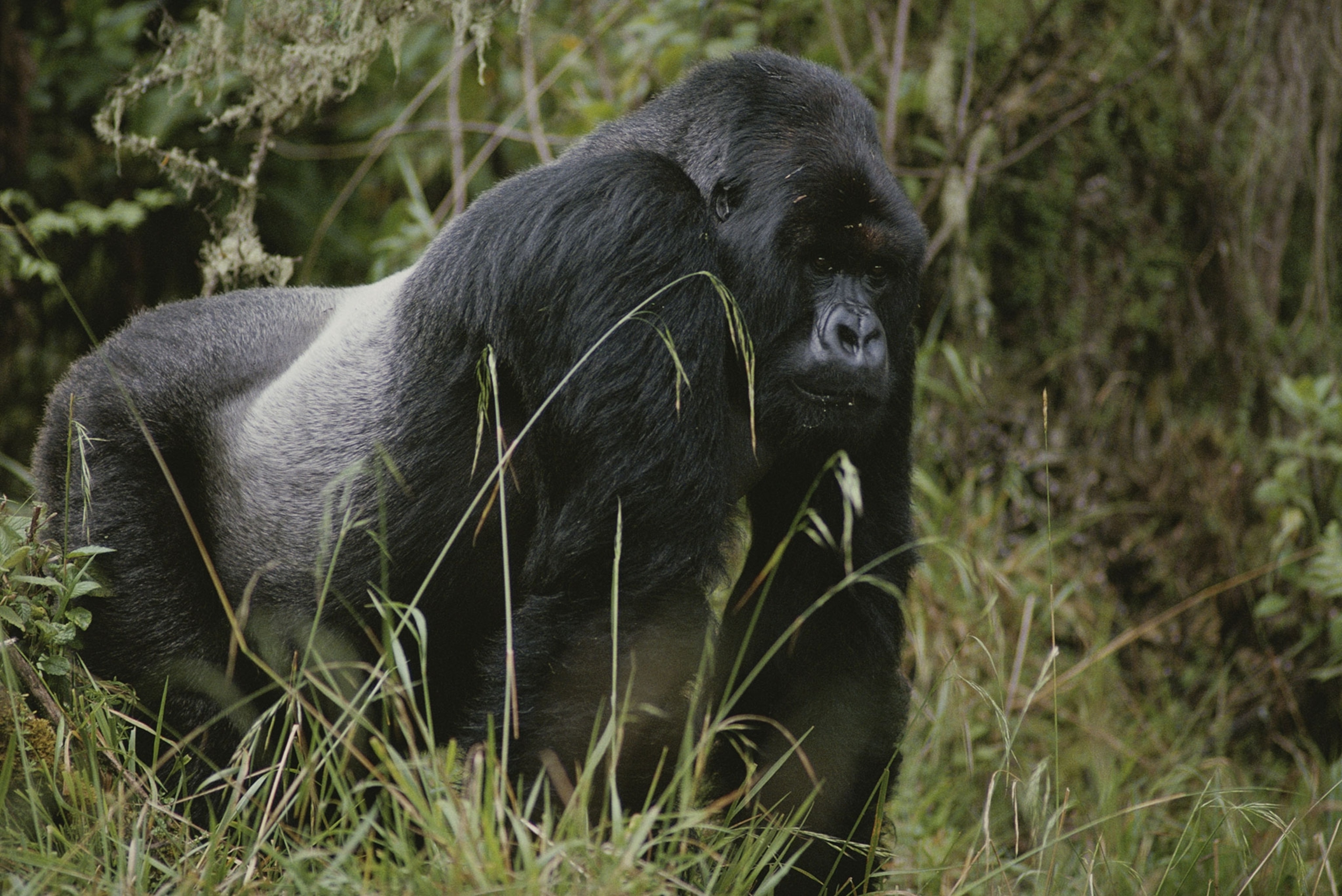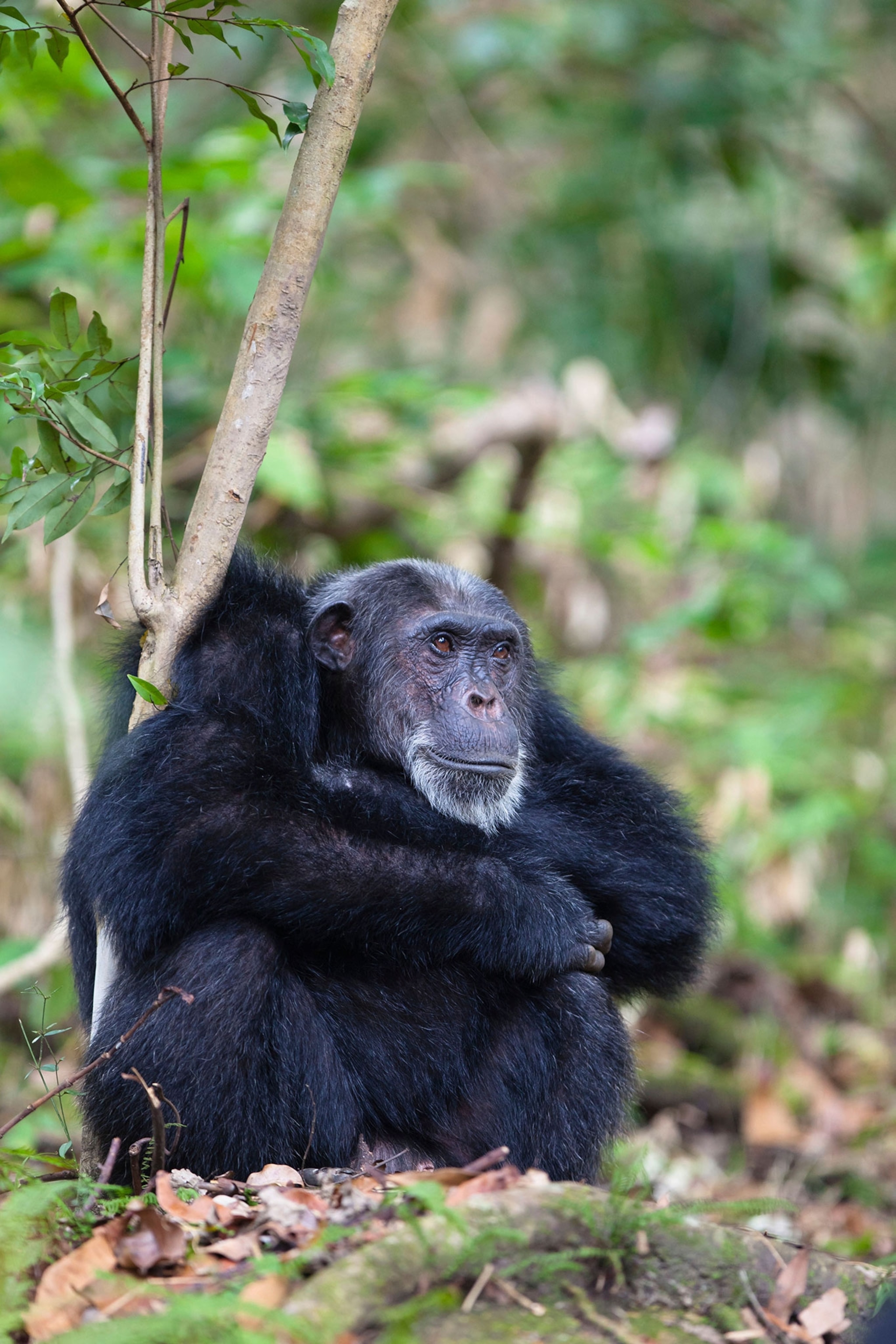
Why Animals Get Gray Hair, Too
Move over, Hollywood silver foxes—at least one other species uses gray hair as a status symbol.
Gray hair can be bane or beauty, depending on who you ask.
It's also common among primates, leading one reader to inquire via Twitter, "What is the purpose of hair turning gray in primates and humans? Status, lack of status?”
We wonder about that, too—after all, if we make it to the golden years, how come all we get is a head full of silver? (Related: "How Old is That Lion? A Guide to Aging Animals.")
In some species, color denotes ranking—male mandrills with the most brightly colored faces and hindquarters dominate, while lionesses can be more attracted to lions with dark manes, which also have higher testosterone.
But only in one known mammal does gray hair seem to confer status: The mountain gorilla.
Silverbacks
Older male gorillas, called silverbacks, call the shots in their family group.
“Male gorillas are 'blackbacks' until they turn about 12 years old, when they develop the silver 'saddle' on their backs,” says Don Moore, director of the Oregon Zoo. (Gorillas are no dummies—here's why.)
All males become silverbacks, but not all become dominant.
Progression to a leadership role “depends on genetics, which female is raising the young male, and if that male survives to be a dominant male of the group," Moore explains.
Also, unlike the peppery gray we humans grow, a silverback's silver comes in as a very strong, uniform color, Moore says.
Wear and Tear
Speaking of people, our gray hair is not an adaptation, according to Steven Austad, an expert in the biology of aging at the University of Alabama, Birmingham.

“It is a failure of the stem cells in your hair follicles, called melanocyte stem cells, that happens with age.” (Related: "Gray Hair Caused by Stress—Cell Stress, That Is.")
Gray hair is probably not much of an advantage or a disadvantage for us, “as by the time our hair turn gray, we are already out of the prime reproductive age,” says Lu Le, a dermatologist at the University of Texas Southwestern Medical Center via email. (Hollywood's silver foxes may beg to differ.)
Le was part of the team who recently discovered the cell that cause baldness and hair to go gray in mice, a find made accidentally while the team was studying a genetic disease that causes tumors to grow on nerves.
“Not all things which happen to the bodies or cells are evolutionarily productive,” Le says, adding that gray hair represents the wear and tear of a long life.
Some other species that go gray as they age include chimpanzees and domestic dogs.
Boss Ladies
Gray hair aside, age does confer status for some female animals, including those living in matriarchal societies, such as bonobos and African elephants.

The oldest female elephant is in charge of the herd, and a 2011 study found that matriarchs over 60 have a better memory and ability to assess threats than do younger females.
So for elephants at least, 60 is the new 40.
Have a question about the weird and wild world? Tweet me, leave me a note in the comments, or find me on Facebook. Weird Animal Question of the Week answers your questions every Saturday.





